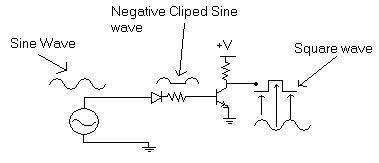xtcx
Advanced Member level 1
- Joined
- Dec 22, 2007
- Messages
- 493
- Helped
- 65
- Reputation
- 130
- Reaction score
- 58
- Trophy points
- 1,308
- Location
- Bangalore, India
- Activity points
- 5,003
adc covert sine wave to square wave form
Hi friends!, I need to convert the sine wave of a constant or variable frequency usually at the order of few MHz into a square wave so that I can process the frequency information in that square wave very easily.My config is
ADC of 12-bit which gives over x"4000" samples in total with 0 to 2000 in negative quadrant and 2000 to 4000 in positive quadrant. So I use to check for the incoming data stream from ADC for values above 2000 for '1's and below 2000 for '0's. In this regard I use to convert the sine to sqr. This is very simple in VHDL but there are some duty cycle problems in this approach. I can't make exact decision on this value. Coz there are only 20 samples in the sine wave(I transmit only 20). So the quantization can't be always assured to give same voltage points.....So locking the data seems unpredictable..Is there any way to convert a sine wave into sqr using some other techniques?..thanks
Hi friends!, I need to convert the sine wave of a constant or variable frequency usually at the order of few MHz into a square wave so that I can process the frequency information in that square wave very easily.My config is
ADC of 12-bit which gives over x"4000" samples in total with 0 to 2000 in negative quadrant and 2000 to 4000 in positive quadrant. So I use to check for the incoming data stream from ADC for values above 2000 for '1's and below 2000 for '0's. In this regard I use to convert the sine to sqr. This is very simple in VHDL but there are some duty cycle problems in this approach. I can't make exact decision on this value. Coz there are only 20 samples in the sine wave(I transmit only 20). So the quantization can't be always assured to give same voltage points.....So locking the data seems unpredictable..Is there any way to convert a sine wave into sqr using some other techniques?..thanks
